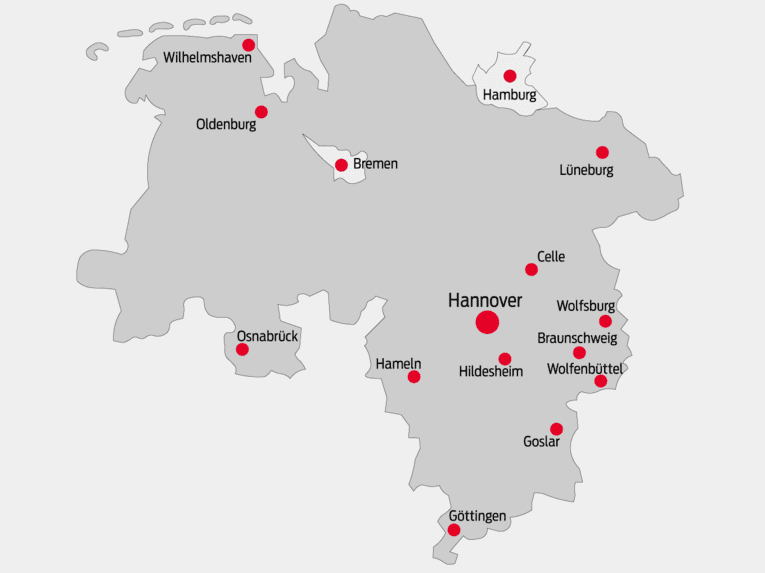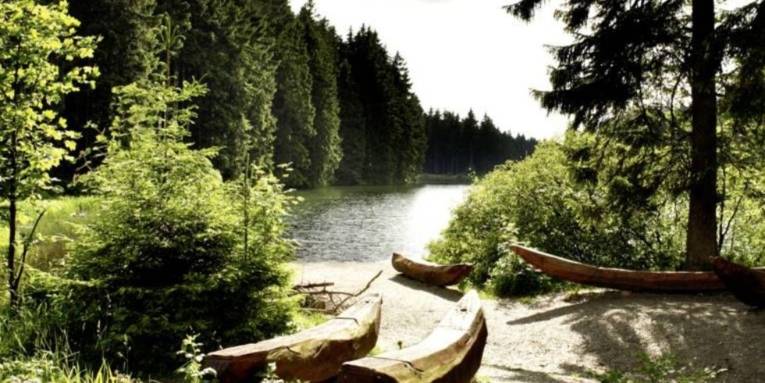7 WORLD HERITAGE SITES IN ONE STATE
UNESCO World Heritage Sites
Major attractions and over 1000 years of history - just a few kilometres from Hannover.
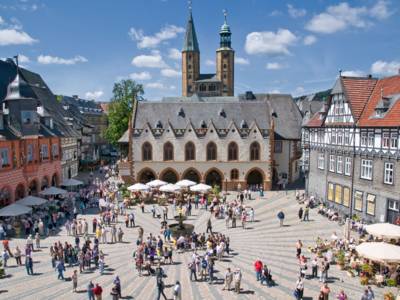
MarketplaceofGoslarintheHarzMountains
Southern Lower Saxony offers exceptional monuments and heritage sites for history enthusiasts and city tourists. The Harz drainage area contains three landmarks which captivate tourists from all over Germany and across the world. One of these is the Goslar Old Town, which draws visitors to saunter through the narrow streets lined with half-timbered houses and hosts an annual Christmas market. The beauty and medieval flair of this thousand-year-old imperial city leave visitors in awe at every nook and cranny of the cobble-clad old town.
Even when considering outstanding buildings such as the Imperial Palace, the Goslar Neuwerk Church or the Gustav-Adolf Church located in Hahnenklee-Bockswiese near the Bocksberg mountain, the town’s past pomp and splendour becomes clear.
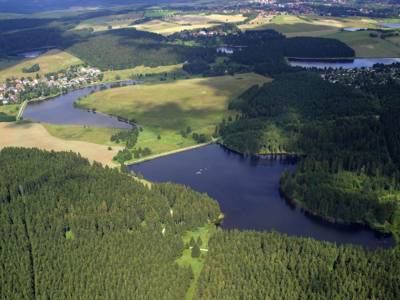
Oberharzer Wasserwirtschaft (Teiche Buntenbock Clausthal-Zellerfeld)
Over time, the ores produced at Rammelsberg made Goslar an important industrial and economic centre and contributed to the wealth of the town as well as that of Walkenried Monastery. Evidence of this time is still present in the form of the Rammelsberg Mine, which closed in 1988 before becoming a UNESCO World Heritage Site along with Goslar’s Old Town in 1992. In 2010 the final addition to the list came in the form of the Upper Harz Water Management Area, which had supplied the town with energy and thus driven its mining industry for eight centuries with its system of pond and ditch networks.
Other sights and landmarks
There is one particularly stunning heritage site in the North and it can’t be viewed around the clock: the Wadden Sea, which became a UNESCO World Heritage Site in 2009. The ever-changing tides on the Dutch, German and Danish coasts make the area a top destination for health tourists, while the 1,300 km long mudflat landscape is a modern-day El Dorado for hikers and nature-lovers.
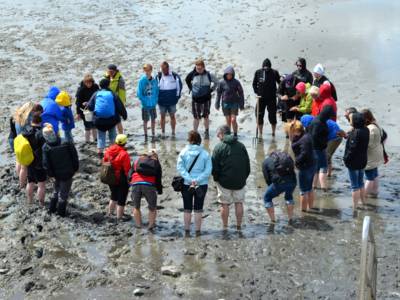
MudflathikeinUpleward
Looking further beyond Hannover towards the south reveals Hildesheim’s array of monuments, with five buildings and sights dominating the city located 34 km away. Highlights naturally include the cultural heritage sites of Hildesheim Cathedral and St. Michael’s Church, both of which date back to the 11th century and thus boast over 1000 years of history. The Gothic and neo-Gothic cathedrals have attracted countless visitors to the city since becoming UNESCO World Heritage Sites in 1985. The Thousand Year Rose on Mariendom cathedral, a landmark of Hildesheim and part of the legend of the “Rose Miracle” which took place during the Second World War, and the Hildesheim Cathedral treasury are especially well-visited. Relics and precious objects attest to the church’s wealth and the city’s active faith. Meanwhile another church in Hildesheim boasts an outstanding feature in the form of the tower at St. Andreas Church: at 114.5 m in height, it’s the tallest church tower in Lower Saxony and can be climbed via 364 steps to give visitors a panoramic view of Hildesheim and the surrounding area from the lookout.
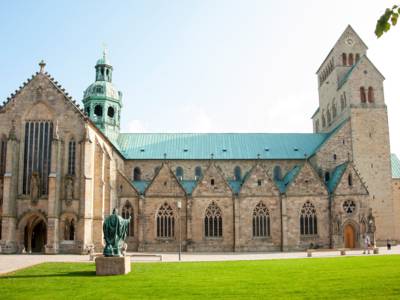
HildesheimCathedral
It may not be a World Heritage Site, but it’s definitely worth visiting. Located on the market square opposite the sandstone town hall is the Knochenhaueramtshaus (Butchers’ Guild House), an impressive half-timbered building which provides an illustrated journey through the history of Hildesheim across five floors. Leaving Hildesheim and heading further south leads to the tranquil town of Alfeld. This small but perfectly formed town hosts a landmark of its own: the yellow Fagus factory of Bauhaus founder Walter Gropius was added to UNESCO’s list of World Heritage Sites in 2011, making it one of a total of 42 in Germany. As forerunner of modern industrial architecture, the requirements of light, air and clarity are evident here - reason enough to drop by the Hildesheim area and view these historical buildings first-hand.
More Informationen:
 Deutsch
Deutsch
 English
English
 中文
中文
 Dansk
Dansk
 Eesti
Eesti
 Español
Español
 Suomi
Suomi
 Français
Français
 Italiano
Italiano
 日本語
日本語
 한국
한국
 Nederlands
Nederlands
 Norge
Norge
 Polski
Polski
 Portugues
Portugues
 Русский
Русский
 Svenska
Svenska
